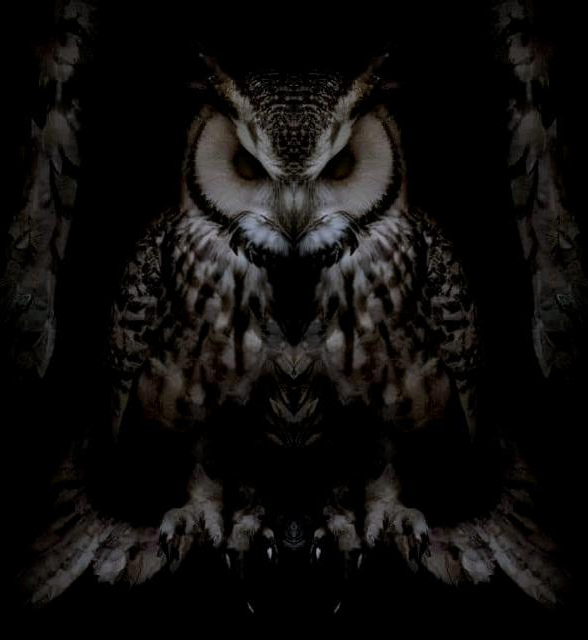

@[email protected] [email protected]
With some caveats, to me, the answers are:
- Definitely Magenta
- I’d say Cyan, even though it still “feels” to me like “the in-between” of Green and Blue
- Magenta again, which highly looks like red
- It’s a draw between Cyan and Yellow, both seem bright enough to be the closest to white
- Definitely Magenta again, it feels pretty dark to me (and dark, to me, has a good connotation as I’ll explain below).
The caveats are:
- Both laptop and external monitor have IPS panels. If I were to use OLED, quantum-dot displays, Plasma or even the old CRT displays, it’d probably yield different perceptions. I don’t own any of these display types to test this, though.
- The specific shape of Venn diagrams also influences on how colors are perceived: a circle have a smaller area (pi×r×r) than a square (s²) or an equilateral rhombus (also s²). Note: I’m considering s = 2r a.k.a. the side of a square equal to the diameter of a circle. The area, in turn, influences how vision perceives contrast.
- Magenta has no real wavelength so it’s produced solely by the brain when both L and S cones are simultaneously stimulated at the highest intensities by artificial lights (LED).
- I’m currently in a room lit both by daylight and by “cold white” LED lamp. The sky is clear and there’s plenty of vegetation in my vicinity tinting the daylight.
- I access Lemmy using dark mode, and the background is the main aspect influencing contrast (the relationship between colors) and, by extension, perception. Dark background leads to “brighter” colors.
- I use high prescription glasses, and my lenses are slightly yellowed. This possibly influence my perception of colors.
- I have a personal bias towards red and purple due to my specific views on spirituality. Specifically, the way Lilith pulled me in the recent years made me perceive red in a more vivid manner and be attracted to it, while my syntony with Lucifer makes me feel something “divine” with purple (while also sharing some energy with the Lilithian red). Turns out that purple isn’t so perceptually different from magenta, and our RGB displays produce both colors artificially with the similar Red-Blue dance (with magenta specifically having less of blue, therefore being less of a Luciferian color and more of a Lilithian color).
- I’m a former developer and someone who’s worked extensively from UX/UI to graphic design. I built several full-stack webpages, Delphi 7 and VB6 native applications, as well as brands, logos and leaflets. This made me highly familiar with RGB palettes, and this may be another personal bias in my perception.
So, indeed, color perception is highly subjective although living beings share some commonalities when interpreting colors (e.g. red as “danger”; it’s the Carl Jung’s “collective unconscious”).



@[email protected] [email protected]
I’ll try to bridge science, philosophy and spirituality, as I usually do. To me, there aren’t clear boundaries between them bc, to me, they’re highly complementary: Science offers the skeptical-empirical rigor and materiality, Philosophy offers the paradoxical questioning and Spirituality emerges from subjectively perceiving the previous two.
I start with the hypothesis that the universe always existed. In such a case, the Big Bang isn’t the beginning: rather, it’d be some kind of cyclical cosmic phenomenon where matter and/or the fabric of spacetime continuum collapse (due to expansion) only to explode and expand again. This would respect the Laws of Thermodynamics (and Lavoisier Principle) because there’s no energy nor mass being created nor destroyed, just transformed, endlessly. Big Crunch deserves mention bc it’s exactly what it’s about.
There’s also the controversial theory of Zero-sum, where the universe doesn’t actually exist. It may sound crazy (We are existent… or are we? Vsauce song starts playing), but it would also respect the aforementioned laws: there’s no need of creation or destruction if the overall sum of everything equals to a round nought.
We could also mention the Multiverse theory, String (M-Theory), and Big Bounce. In such a scenario, this universe is just one of countless universes, so the factor sparking it into existence would be outside it, thus outside (beyond) space and time.
The latter takes us into philosophy, the Aristotle’s Prime Mover. It could be seen as the “thing” beyond this universe, except that it isn’t a “thing” because it has no “thingness”, but this lack of “thingness” would imply non-existence, except that it’s not something nonexistent either. Here is where human language struggles to define it: language requires “thingness” and temporality, yet the Prime Mover has neither (and it isn’t an “it” so it could “have”).
This takes us to spirituality. Many religions oversimplify this as “creator deity(ies)”, and many (if not all) religions tend to give it agency and shape. While I do have some religiosity (Luciferianism) and tendency of personification (e.g. Lilith as both a red-haired woman and an owl), I also hold the belief that cosmic forces have no particular form, it’s just me trying to give some Order to Chaos… And that’s what the whole existence seems to be about: Ordo ab Chao, a cosmic, eternal tug-of-war where it’s guaranteed that the “sparks” of cosmic order will eventually decay back to a soup of primordial chaos, only to the very chaotic nature of this soup to emerge order again. It’s akin to a Double Pendulum, where sometimes the apparent rhythmic motion vanishes into chaotic motion just for the rhythm to unexpectedly reappear later, but it’s just the Cosmos: endless and uncaring about lifeforms, for life is just stardust.
I could explain more, but I’m limited to 3000 chars so I must end: Cosmos always existed and never existed.